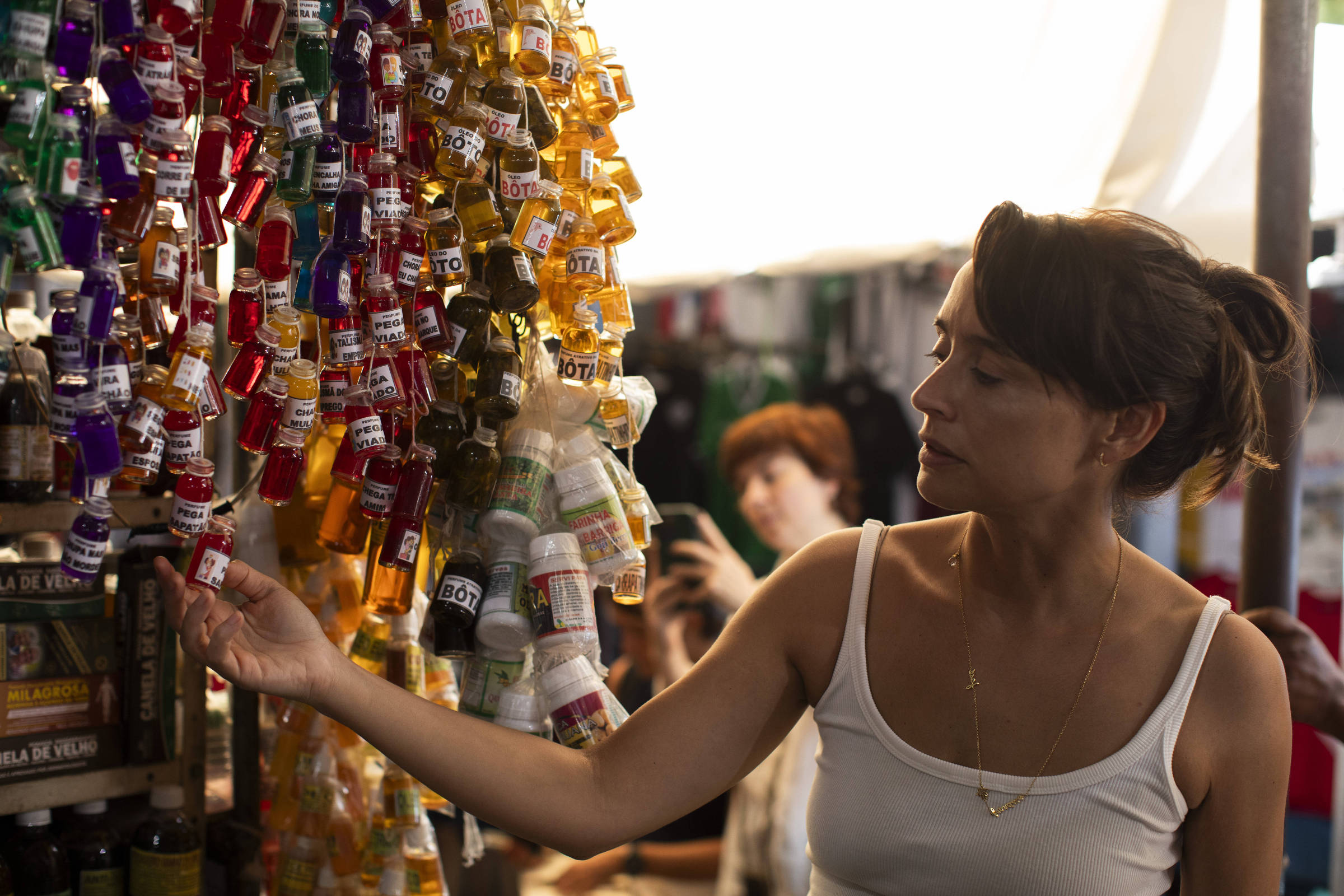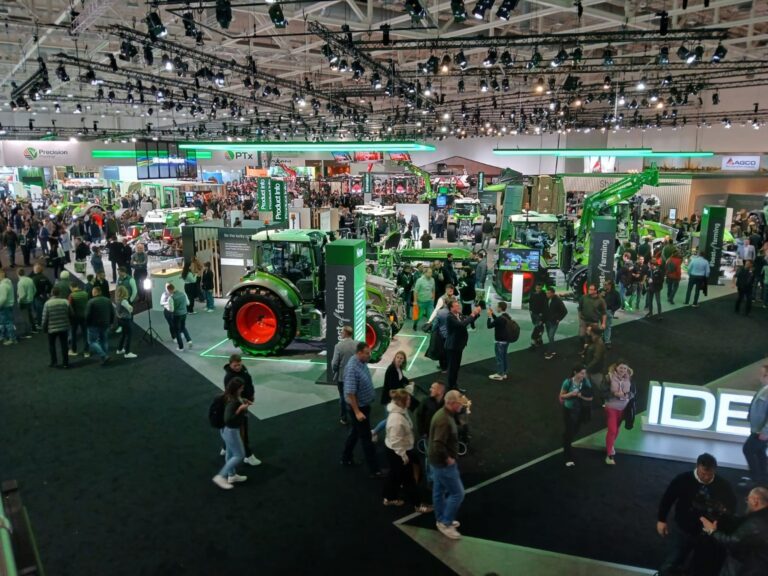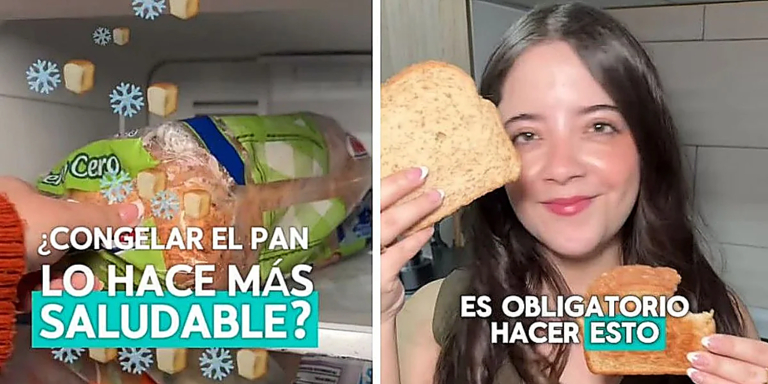
São Paulo chef Bel Coelho’s 15 years of research into ingredients from Brazil’s different biomes led him to undertake an ambitious and rare project: documenting the ecological and sociocultural richness of each of these regions through their food systems in a book and documentary.
The first result of this project is the book and documentary “Floresta na Boca” about the Amazon biome, taking advantage of COP30, which will be held in Belém this year. The first one will go on sale this Sunday (16th) at 5pm at the Travesia bookstore in the capital of Pará state, with a chat and autograph session.
The film will be screened for the first time this Saturday (15th) at 3pm at the Amazonia Museum, also in Belém. Both events are open to the public.
This work is written in bilingual (Portuguese and English) and can be defined as a travel diary. In it, Bell deals with three fundamental elements: people, landscape, and food, in an attempt to understand this vast territory that, despite its global projections, remains largely unknown. In addition to taste, texture, and aroma, the chef wanted to understand the relationships implicit in origin, geography, and production chain.
The copyright of this publication, funded by the Arapyau Institute, is donated to the community-based organizations that contributed to its preparation.
For this book, the chef selected four iconic ingredients from the region: acai, cocoa, Brazil nuts, and cassava. “I wanted to delve deeper into these production chains and how they can help conserve biodiversity and bring resource and economic flows to local communities through bioeconomy, processing and augmentation technologies,” he explained in an interview at Espaso Folha in Belém.
In his publication, the author presents renewable food systems and the people behind them. “They produce in a sustainable way, leaving the forest intact, whether it is extractive or agroforestry methods. In other words, they use the most diverse models. I wanted to use gastronomy for this purpose.”
To carry out this research, the author traveled for one month to different locations in three regions of Pará state (Lower Tocantins, Xingu Island, and Tapajos Island), visiting communities of family farmers, indigenous peoples, quilombolas, riverside communities, and miners. She invited her friend and ecologist Jeronimo Vilas-Boas from Reenvolver to develop a travel route through regions that express the ecological and sociocultural richness of the Amazon.
Most of the trips were made by boat along the area’s rivers, sometimes for long periods of time. “From Altamira to Rio Novo Extraction Reserve, it took 12 hours for Brazil nuts,” he reports. “But it’s beautiful. I feel very blessed. I’ve already immersed myself in the Amazon a lot, especially the state of Pará. So I’m already familiar with the Amazon,” she says.
This familiarity is why he chose this state to represent the biome. “The Amazon is about the same size as Europe. We had to choose a section, and I’ve been in the state of Pará since 2003, so I’m familiar with the culture and the people, and I already knew about some of the systems and the people behind them,” he explains. She also finds Pará’s cuisine to be diverse and complex “in a good way”.
Amazon’s introduction
The book includes testimonies of people in the Amazon that Bell met on his eco-gastronomic journey. Among them is Vanildo Ferreira Quaresma, president of Cofurta (the fruit growers’ cooperative of Abaetetuba) and extractivist, who talks about the relevance of acai in his life: We survived by making porridge and juice, but at that time, this product was only for our consumption. ”
In a separate statement, Raimunda Rodríguez of the Rio Novo Mining Reserve spoke of the suffering of miners in the region due to this year’s poor harvest. “I am 35 years old, born and raised in this area. There has never been a shortage of chestnuts. Some years the price goes down because there are so many chestnuts. Some years there are less. But it is a negative, and you can take and save them for your family. This year I was very surprised. Imagine looking at the forest and not even having enough to eat.”
Indeed, the effects of climate change in the region became clear to Bell during his trip. “In addition to this story about Brazil nuts, the longer-than-usual drought is affecting all the people who rely on rivers and fishing to make a living. So it’s very serious. And fires are also on the rise,” he reports.
While traveling, Bell learned seven recipes from the book. These include manzape (a traditional cake made from pav-like cassava dough), taught by Francisca das Chagas from Resex Rio Novo. and Mapala Roast by Helena Quaresma from Lower Tocantins.
The chef also shared three of his recipes using ingredients from the biome, including green pepper tempura with shrimp and bakri jelly and dried pirarucu brandade with salted egg yolk.
Mr Bell plans to publish a book on other biomes in the country, including Caatinga, for which he has already raised funds.
Documentary about riverside women
This documentary was recorded last July. The film is directed by photographer Carol Quintanilla and is 52 minutes long. Patti Durance’s research focuses on the lives of women in urban riverside communities in the state of Pará, including Altamira, Santarem, Belém, Abaetetuba, and Medicilandia.
Bell, who sailed for 20 days along the Xingu, Iriri, Novo, Tapajos, Arapiuns and Baixo Tocantins rivers, said: “We are trying to keep our environmental impact low and have immense ecological value. “We wanted to give voice to the forest guardians who produce food with such high nutritional and sensory value. They do this in a beautiful and respectful way, fully interacting with the cycles of nature.”
In addition to screening during COP30, there is also an idea to release a documentary in São Paulo and conclude the exhibition on a streaming service.



